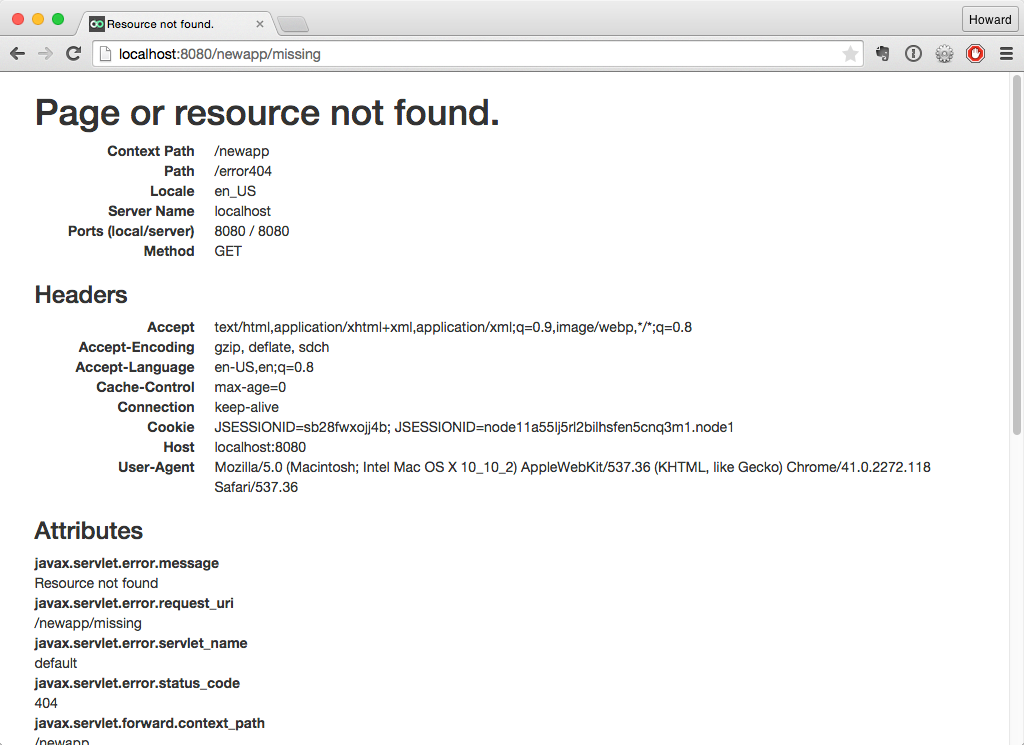Serving Tapestry Pages as Servlet Error Pages
Do you want to dress up your site and use a snazzy Tapestry page instead of the default 404 error page? Using modern servlet containers, this is a snap!
Related Articles
Simply upgrade your application web.xml to the 2.4 version (or newer), and make a couple of changes:
<?xml version="1.0" encoding="UTF-8"?>
<web-app xmlns="http://java.sun.com/xml/ns/j2ee" xmlns:xsi="http://www.w3.org/2001/XMLSchema-instance"
xsi:schemaLocation="http://java.sun.com/xml/ns/j2ee http://java.sun.com/xml/ns/j2ee/web-app_2_4.xsd"
version="2.4">
<display-name>Cookbook</display-name>
<context-param>
<param-name>tapestry.app-package</param-name>
<param-value>com.example.newapp</param-value>
</context-param>
<filter>
<filter-name>app</filter-name>
<!-- org.apache.tapestry5.TapestryFilter if not Tapestry 5.7.0+ -->
<filter-class>org.apache.tapestry5.http.TapestryFilter</filter-class>
</filter>
<filter-mapping>
<filter-name>app</filter-name>
<url-pattern>/*</url-pattern>
<dispatcher>REQUEST</dispatcher>
<dispatcher>ERROR</dispatcher>
</filter-mapping>
<error-page>
<error-code>404</error-code>
<location>/error404</location>
</error-page>
</web-app>
Tapestry's filter must be marked as a handler for both standard requests and errors. That's accomplished with the <dispatcher> elements inside the <filter-mapping> section.
You must then map error codes to Tapestry URLs. In this case, the 404 error is send to the /error404 resource, which is really the "Error404" Tapestry page.
We'll create a simple Error404 page, one that displays a message and (in development mode) displays the details about the incoming request.
<html xmlns:t="http://tapestry.apache.org/schema/tapestry_5_4.xsd">
<head>
<title>Resource not found.</title>
</head>
<body>
<div class="container">
<h1>Page or resource not found.</h1>
<t:if test="! productionMode">
<t:renderobject object="request"/>
</t:if>
</div>
</body>
</html>The page simply makes the request and productionMode properties available:
package com.example.newapp.pages;
import org.apache.tapestry5.SymbolConstants;
import org.apache.tapestry5.annotations.Property;
import org.apache.tapestry5.ioc.annotations.Inject;
import org.apache.tapestry5.ioc.annotations.Symbol;
// org.apache.tapestry5.services.Request if not Tapestry 5.7.0+
import org.apache.tapestry5.services.http.Request;
public class Error404
{
@Property
@Inject
private Request request;
@Property
@Inject
@Symbol(SymbolConstants.PRODUCTION_MODE)
private boolean productionMode;
}
The end-result, in when not in production mode, looks like this:
An issue with an application that has a root Index page is that any invalid path, which would normally generate a 404 error, is instead routed to the Index page (because the invalid path looks like page's activation context). See Issue TAP5-2070.
